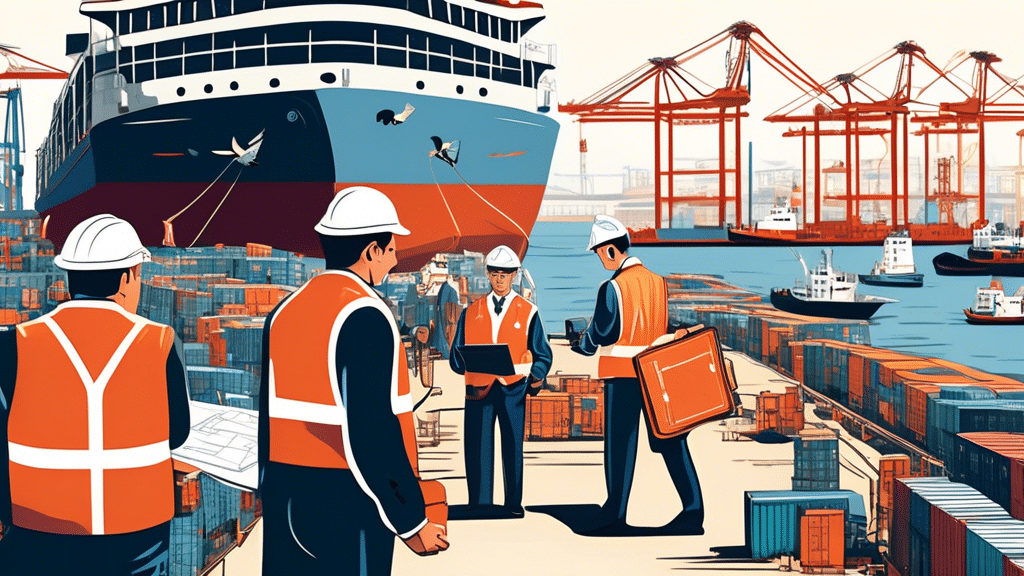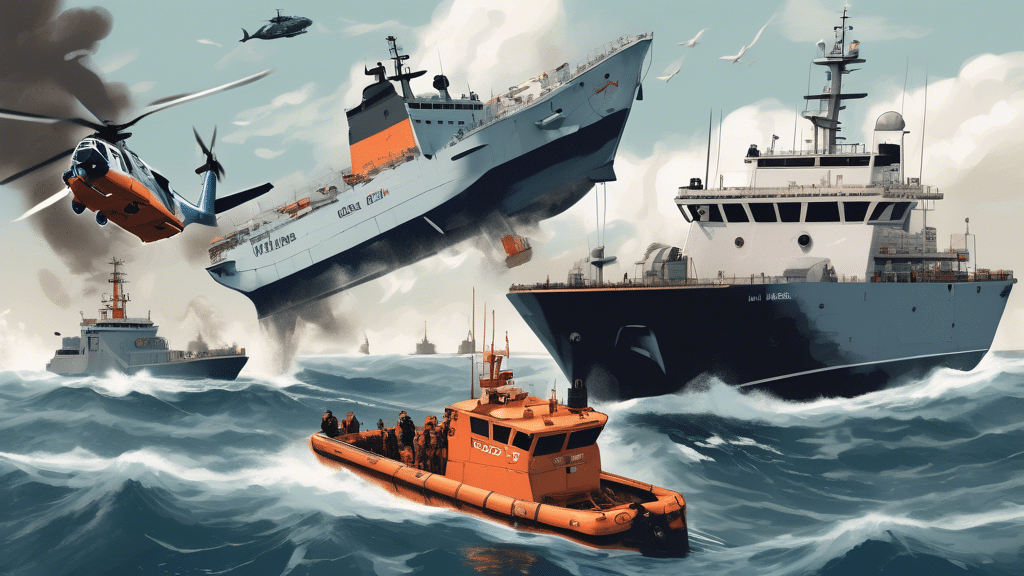Navigating the vast expanses of the world’s oceans comes with a complex set of responsibilities, particularly when it comes to maintaining security and safety. Understanding international maritime security standards is crucial for operators who wish to minimize risks and ensure smooth operations. Key regulations such as the International Convention for the Safety of Life at Sea (SOLAS) and the International Ship and Port Facility Security (ISPS) Code set the benchmark, prescribing stringent measures to safeguard maritime activities. These standards are not mere formalities; they are vital for protecting vessels, crew, and cargo, and for maintaining the stability of global trade networks. Compliance is not just a legal obligation but a pillar of operational integrity and industry reputation. To achieve and sustain this compliance, maritime operators must adopt comprehensive security management systems, coupled with regular training and audits for their personnel. Exercises and drills should be ongoing to instill a culture of preparedness and vigilance.
Understanding International Maritime Security Standards
Overview of Key Maritime Security Regulations
In an ever-evolving environment of global commerce, international maritime security standards serve as the bedrock of safe and efficient seaborne trade. Two cornerstones of these regulations are the Safety of Life at Sea (SOLAS) Convention and the International Ship and Port Facility Security (ISPS) Code. These foundational frameworks not only bolster security but enhance the resilience of global maritime operations.
The SOLAS Convention, originally established in 1914 in response to the Titanic disaster, has undergone numerous revisions to address the contemporary challenges of maritime safety. As one of the most pivotal international treaties, SOLAS mandates comprehensive minimum safety standards in engineering, construction, and operation of ships. Crucially, Chapter XI-2 sets forth the International Code for the Security of Ships and of Port Facilities, better known as the ISPS Code.
The ISPS Code is a pivotal amendment under SOLAS, introduced post-9/11 to mitigate risks associated with maritime terrorism. Consisting of two parts, Part A prescribes mandatory requirements, while Part B offers guidelines for implementation. Key elements include risk assessments, ship security plans, and security levels—each tailored to thwart potential threats and ensure a proactive security posture. The ISPS Code mandates roles, responsibilities, and measures at both ship and port levels, thus creating a cohesive security ecosystem.
Importance of Compliance for Maritime Operators and Global Trade
Compliance with international maritime security standards is not merely a regulatory obligation, but a strategic imperative for maritime operators and stakeholders in global trade. Adherence to these standards signifies a firm commitment to safeguarding human lives, marine environments, and assets, thereby creating a robust foundation for sustainable and secure maritime commerce.
For maritime operators, compliance translates into tangible benefits. It reduces the risk of security breaches that could lead to catastrophic consequences, such as piracy, terrorism, or smuggling. Furthermore, it enhances operational efficiency and reliability, as ships and ports adhering to these standards are often better prepared to respond to potential security disruptions. This preparation is crucial for avoiding costly delays and maintaining smooth supply chain operations.
In the context of global trade, the importance of compliance cannot be overstated. International trade is the lifeblood of the global economy, with approximately 90% of the world’s merchandise transported via sea. Non-compliance can lead to severe repercussions, including trade bans, financial penalties, and reputational damage. Conversely, compliant operators are trusted partners in international trade, enjoying streamlined customs procedures and fewer operational disruptions.
Moreover, compliance fosters a culture of continuous improvement and vigilance. Operators must stay abreast of evolving security threats and regulatory changes. This need for ongoing adaptation pushes the industry toward greater innovation and resilience, ensuring that maritime transport remains a safe and reliable backbone of global trade.
Discover More About Our Courses Here!
Strategies for Achieving and Maintaining Compliance
Implementation of Security Management Systems
To ensure compliance with international maritime security standards, implementing Security Management Systems (SMS) is essential. An effective SMS is meticulously designed to align with the stringent requirements of regulations like the International Ship and Port Facility Security (ISPS) Code. A comprehensive SMS not only protects assets but also mitigates risks associated with maritime operations.
Structured SMS frameworks encompass risk assessment, security protocol documentation, and contingency planning. By identifying vulnerabilities, shipping companies can proactively address potential security threats. The ISPS Code mandates this by requiring all vessels to have a ship security plan (SSP) that outlines measures for the prevention of security incidents.
Integration of advanced technologies into SMS can also bolster compliance efforts. Surveillance systems, automatic identification systems (AIS), and cybersecurity measures collectively work to fortify maritime security. These technologies provide real-time data and enhance situational awareness, which is critical in detecting and responding to security threats promptly.
Moreover, SMS facilitates seamless communication and coordination among different stakeholders, such as port authorities, ship operators, and regulatory bodies. This collaborative approach ensures a unified response to security challenges and fosters a culture of vigilance and preparedness.
Regular Training and Audits for Maritime Personnel
Regular training and periodic audits are pivotal in maintaining compliance with maritime security standards. The dynamic nature of maritime operations necessitates continuous education and skill enhancement for maritime personnel. Comprehensive training programs should be tailored to address specific security scenarios that crew members might encounter.
Training programs must be aligned with the employment of the ISPS Code, emphasizing roles and responsibilities under ship security plans. Simulation exercises and drills should be conducted to provide practical experience in responding to security threats. Crew members should be proficient in handling emergency equipment and executing security procedures efficiently.
Audits play an equally crucial role in ensuring adherence to security protocols. Internal audits conducted by ship operators, combined with external audits by third-party regulatory bodies, help in identifying compliance gaps and areas that require improvement. These audits assess the effectiveness of security measures, training programs, and the overall SMS framework.
Feedback from audits should result in actionable insights, leading to the refinement of security protocols and training curricula. Regularly updated training modules keep the personnel informed about the latest threats, new regulations, and best practices in maritime security.
To summarize, integrating comprehensive SMS and investing in rigorous training and auditing processes are fundamental strategies for achieving and maintaining compliance with international maritime security standards. These measures not only ensure regulatory adherence but also foster a secure and resilient maritime industry.
Navigating the high seas of maritime security standards is an expedition no operator can afford to miss. Anchoring operations in the sturdy framework of regulations like SOLAS and the ISPS Code is not just about ticking boxes—it’s about fortifying the gates of global trade. Ensuring compliance morphs into a lifeline when security management systems are seamlessly integrated and kept buoyant through stringent training and audits. Maritime personnel, through continual education and scrutiny, become the vigilant guardians of this realm. The ripple effect? An industry that sails smoothly, confidently carrying the cargo of global economic stability.














